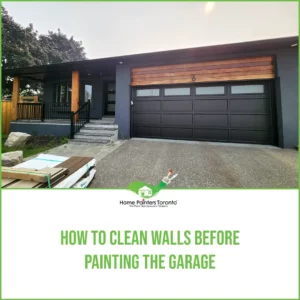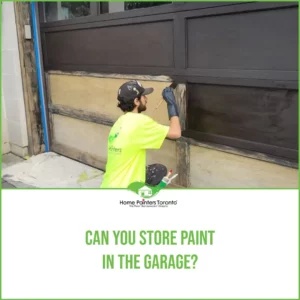
Whether you’re looking to transform your dirty storage area into a man cave or increase the value of your property before putting it on the market, painting the garage is a great – and fairly easy – home renovation project.
There are, however, some differences between painting the garage and painting other areas of your house, which is why we’re here to help! From preparation to completion, we’ll guide you through all the steps in painting the garage.
Top Tips When Painting Your Garage
1. Choose the Right Garage Paint
When painting your garage, opt for high-quality paint specifically designed for this type of space. High-quality paints are more durable and will last longer in harsh environments like garages. Remember that different surfaces within your garage require different paint types.
Garage Walls and ceilings: The best paint for garage walls and ceilings is an interior latex paint with a finish like semi-gloss or satin. This garage wall paint is easy to wipe clean, durable, and moisture-resistant.
Concrete floor: Use epoxy or concrete floor paint that is designed to adhere well to the surface, repel stains, and withstand the wear and tear of vehicles, tools, and foot traffic.
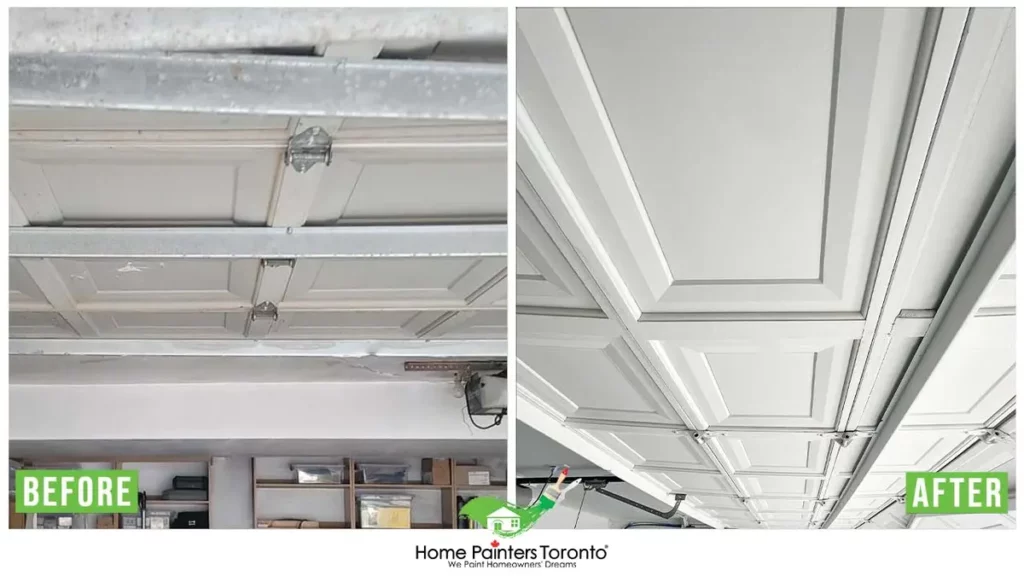
2. Proper Preparation
Before you start painting, take time to prepare the surfaces correctly to ensure a high-quality finish that will last.
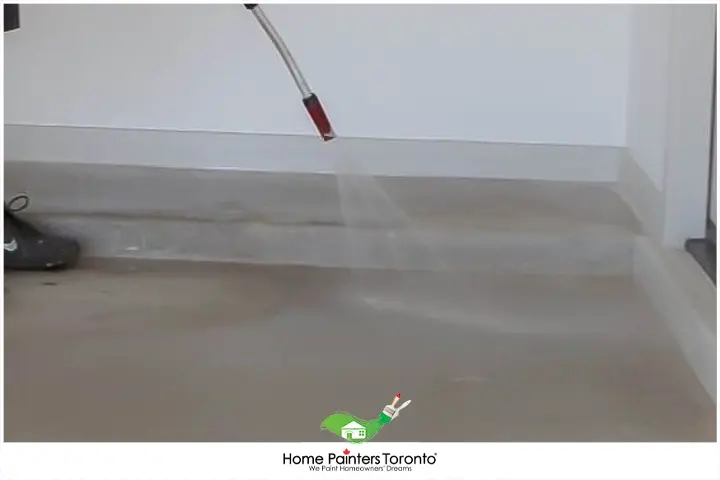
Cleaning: Clean surfaces thoroughly with a solution of water and mild detergent to remove any dirt, grease, or grime. Rinse with clean water and allow it to dry completely.
Sanding: Lightly sand garage walls, trim, and any wooden surfaces to remove any loose or peeling paint and to create a smooth surface for the new paint to adhere to. Make sure to wear safety gear like a mask and goggles while sanding.
Filling Holes and Cracks: Fill any holes or cracks with a suitable patching compound, allowing it to dry completely before sanding it smooth.
Primer: Apply a high-quality primer to garage walls, especially if you’re painting over a dark colour or bare wood. For concrete floors, apply an epoxy primer specifically designed for concrete surfaces.
3. Choose the Right Tools
Using the proper tools can make a big difference in the ease and finish of your painting project.
Brushes and Rollers: Opt for high-quality paintbrushes and rollers to achieve a smooth, even finish. Use angled brushes for cutting in, and remember to choose a roller with a nap length suitable for your wall’s texture.
Paint Trays and Liners: Invest in sturdy paint trays and disposable liners to make cleaning up easier.
Extension Poles and Ladders: Use extension poles for rollers when painting garage walls and ceilings that are high, and have a ladder handy for those hard-to-reach spots.
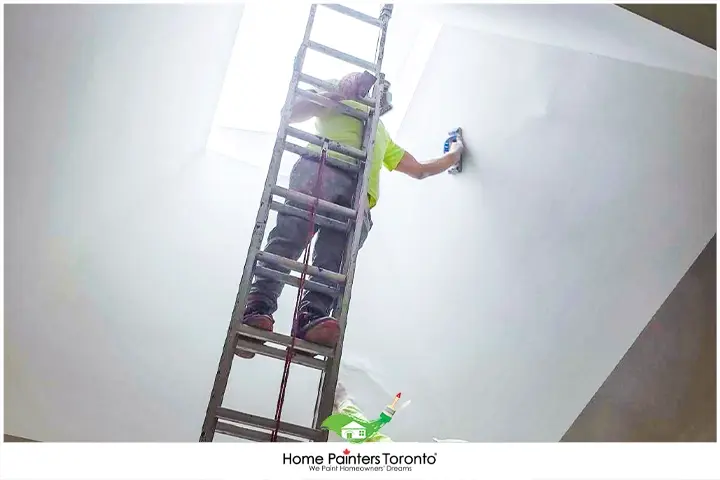
4. Painting Techniques and Tips
Paint in the Right Order: Start with ceilings, then move on to walls, trim, and finally, the floor. This order helps minimize the chance of getting paint on freshly painted surfaces.
Cutting-In: Use an angled brush to “cut in” the edges where walls meet ceilings, around doors and windows, and around any built-ins or fixtures.
Techniques for Walls and Ceilings: Paint in small sections, using a “W” or “M” pattern with your roller. This technique produces a consistent, even coverage.
Floor Coating: Apply concrete floor paint or epoxy using a roller with an extension pole. Remember to start in a corner, working your way towards the garage door, so you don’t paint yourself into a corner.
Drying and Ventilation: Ensure proper ventilation and allow ample drying time between coats and before using your garage again. Follow the manufacturer’s recommendations on drying times.
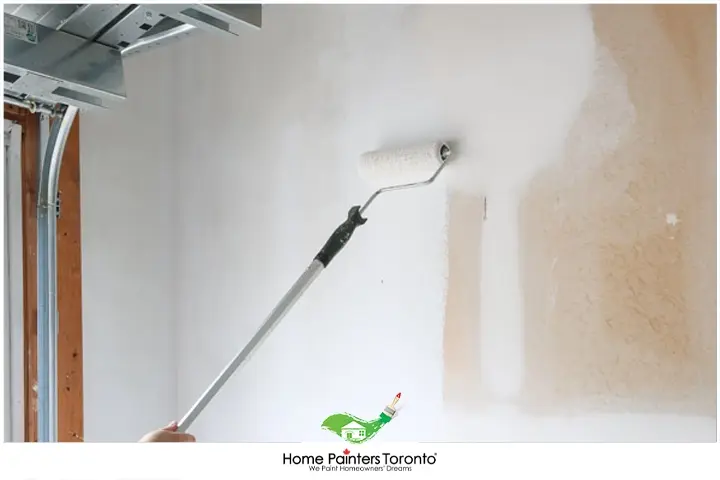
5. Clean-up and Maintenance
Cleaning Tools: Clean brushes, roller covers, and trays immediately after use. For water-based paints, use soap and water. For oil-based paints, you’ll need to use paint thinner or mineral spirits.
Paint Disposal: Dispose of leftover paint and containers responsibly according to local regulations.
Maintenance: Regularly clean your garage and walls, and keep your floor free from grease and grime to prolong the life of your paint job.
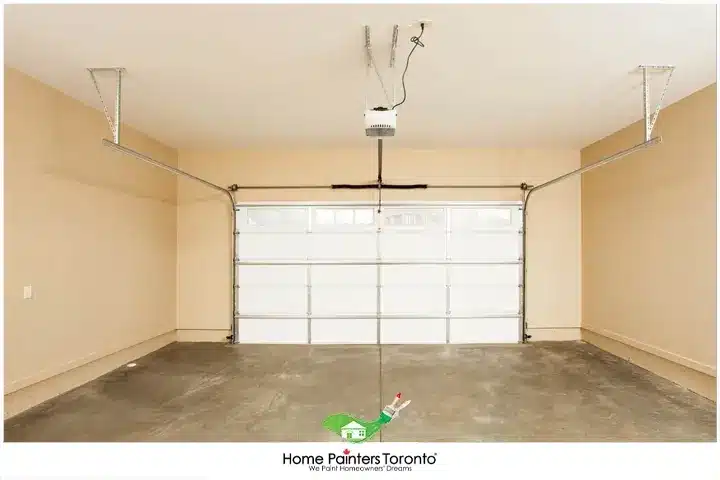
How to Paint Garage Interior: A Step-by-Step Guide
Revamping your garage’s interior not only makes it look more inviting but also creates a more functional space. Follow this step-by-step guide to ensure your garage’s interior achieves a fresh and professional look.
Step 1: Cleaning the Floor and the Walls Before Painting the Garage
Before you can begin painting the garage, you will need to clean whatever surfaces you will be working on. Some people choose to only paint the walls, while others like to paint both the walls and the floor (or maybe even just the floor).
No matter what your plans are, a good cleaning will be necessary to ensure that the paint adheres properly and that you will not encounter any problems.
Should you choose not to clean, you will find that your paint will easily peel and chip. And that stains caused by grease and rust will find their way through.
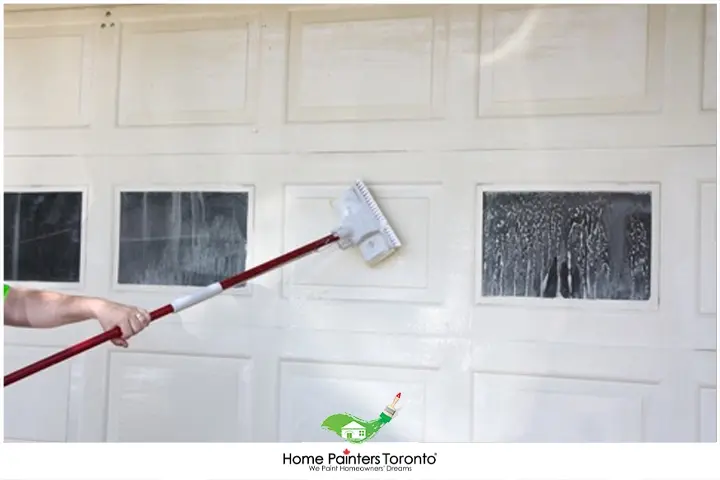
- Start cleaning the floor by sweeping up any dirt and debris. And then use a shop vacuum to suck up anything you may have missed.
- Next, use a degreaser, a 3-1 bleach and water solution, and/or a Trisodium Phosphate cleaner and scrub the floor with a sponge or a wire brush. If the grease and oil stains are really bad, you could try using a pressure washer to remove them instead.
Tip: It is important to rinse the floor when using chemicals. So that they do not soak into the concrete and remain there.
- If you plan on painting the garage walls, you will want to avoid using chemicals and the pressure washer. As these will only damage the drywall.
- Start by using the shop vacuum once more to clean up any surface dirt. And then use a mixture of water and dish soap to gently clean the walls with a cloth or sponge.
Step 2: Painting the Garage Floor
Painting the garage floor is a great way to turn the room from shabby to classy. Before you can start, however, you will want to apply a primer or a sealer.
Primer is used in most other painting projects because it helps the paint stick to the surface. If you have problems with moisture in your garage, a sealer will be more appropriate for the floor to prevent future stains and concrete dust from ruining your fresh coat.
A sealer can also act as a primer, so there is no need to use both products if you do choose to seal the floor.
Once the primer or sealer has dried, you can start using epoxy-type paint made specifically for garages to finish up the job. Start at one end of the garage and work towards an exit to avoid ruining your paint job by walking over it to get out.
You can use a paint roller for painting the garage floor for the most part but switch to a brush to get the corners and any hard-to-reach areas. Let the first coat dry for 24 hours before you apply a second one.
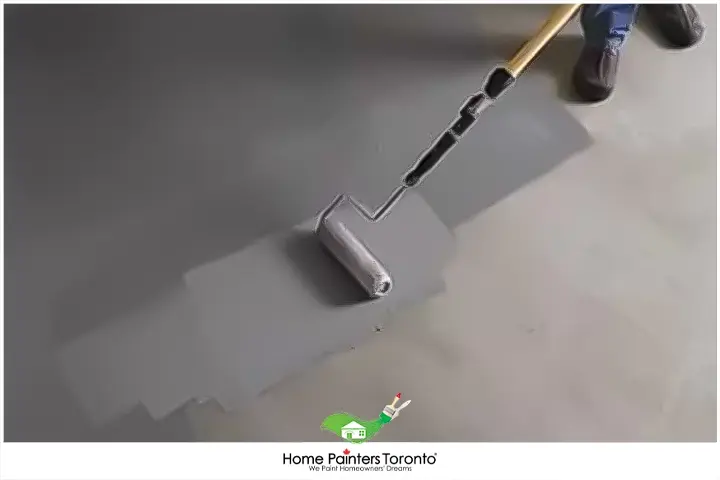
Step 3: Painting the Garage Walls
Painting the garage walls is a little easier than painting the garage floor. Once again, you will likely need to prime the walls, especially if the drywall is brand new or if there is water damage.
A primer will help prevent the paint from soaking into the drywall and stop future stains from occurring. If the walls had been previously painted, however, you may be able to skip this step as long as you are using the same type of paint (i.e., latex or oil-based) and you have chosen a darker colour to go over a lighter one.
It is best to use latex, interior paint for the garage if you want the fresh coat to last for a long time. Just as you applied the primer, use a roller to paint the garage walls and switch to a brush to get the corners and the edges.
Again, be sure to give the first coat 24 hours to dry before you apply a second one to give your walls a smooth, finished look.
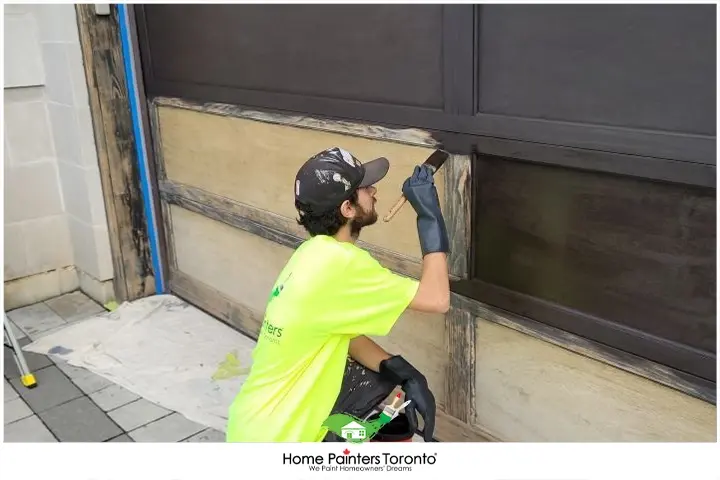
Don’t Think You’re Capable of Painting the Garage Yourself?
If you don’t feel like you have the time or experience required to paint the garage, why not call a contractor instead?
Home Painters Toronto has been in business for more than thirty years, so you can trust us to do a job well done. Contact us to receive a free quote for the cost of painting the garage of your home today.
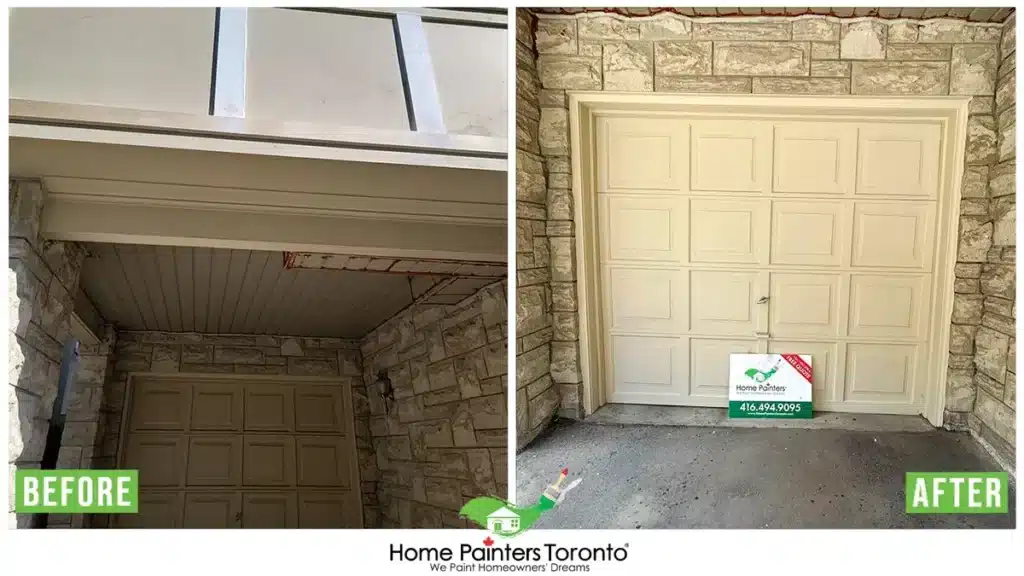
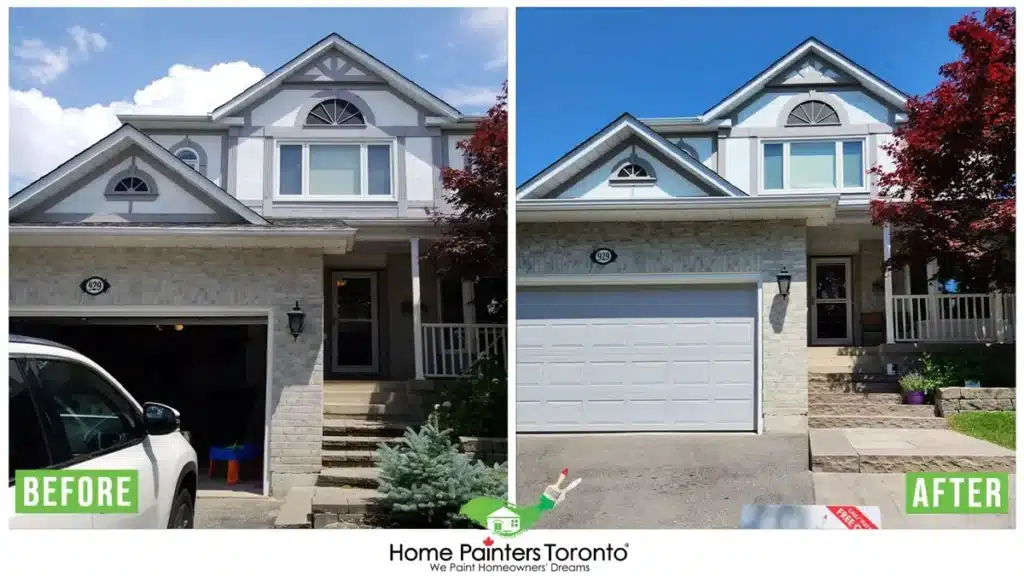
More Interesting Blogs Related to
“PAINTING THE GARAGE: EVERYTHING YOU NEED TO KNOW”
If the work involved in coating paint on the walls of the garage sounds like it involves too much time and energy to do yourself, call 416.494.9095 or email [email protected] for a FREE quote. And don’t forget to follow us on all our social channels below!


